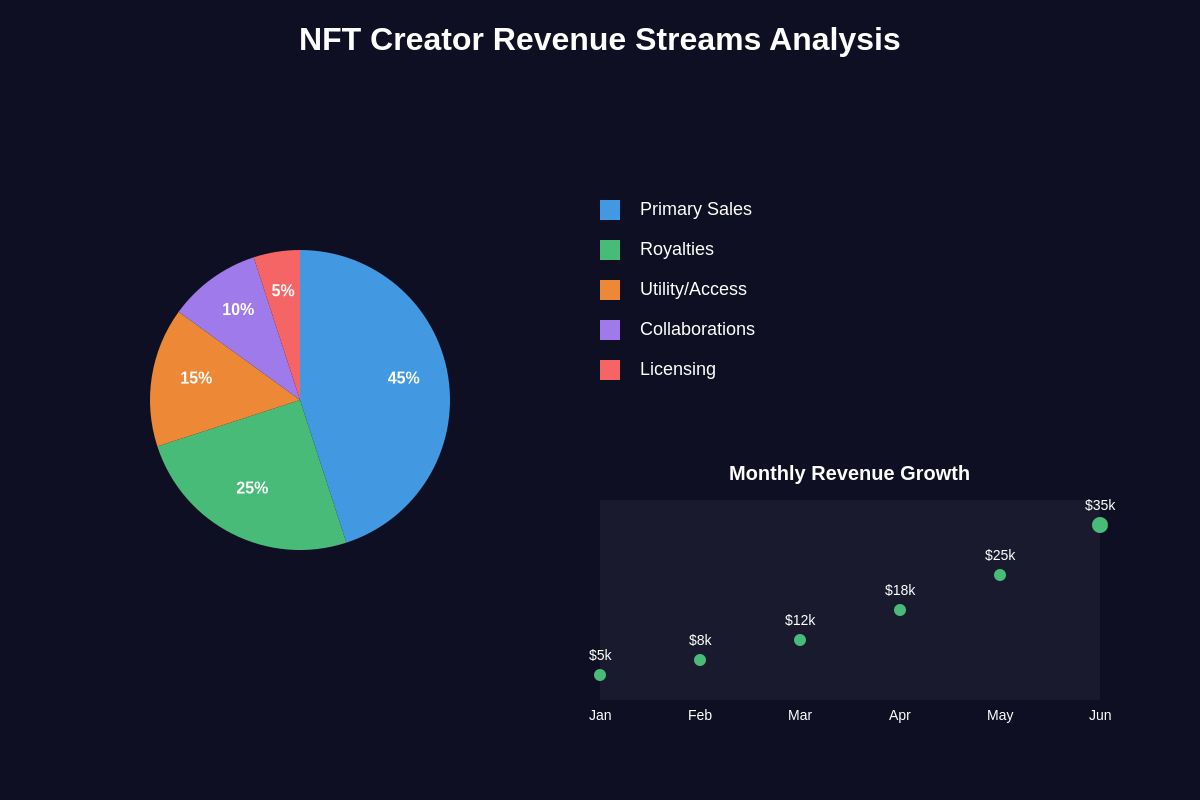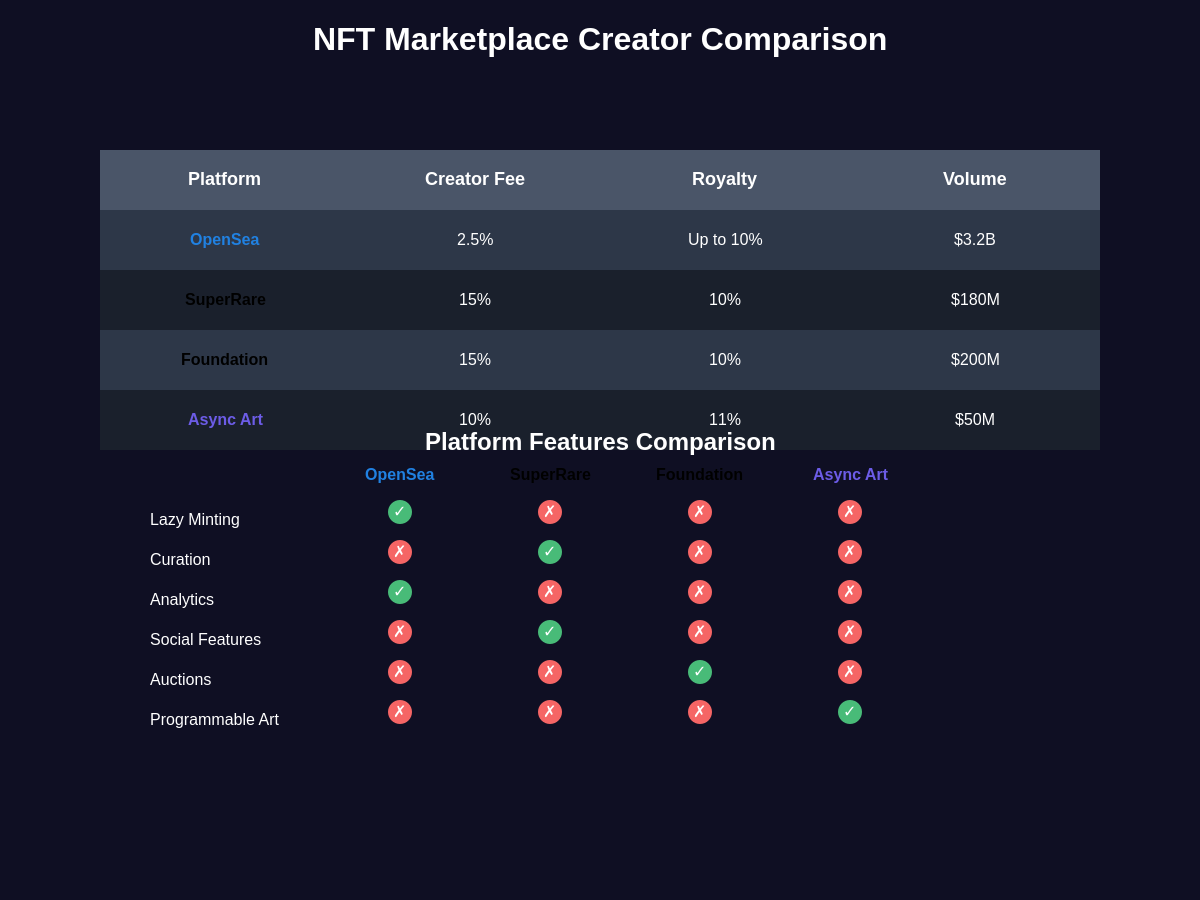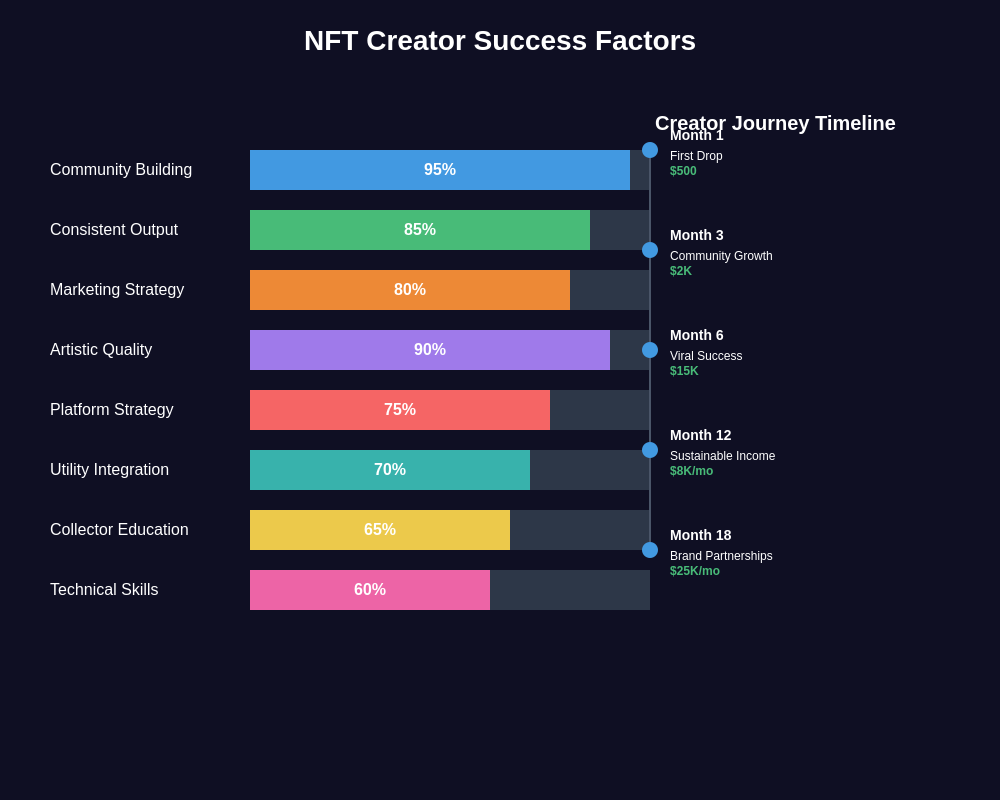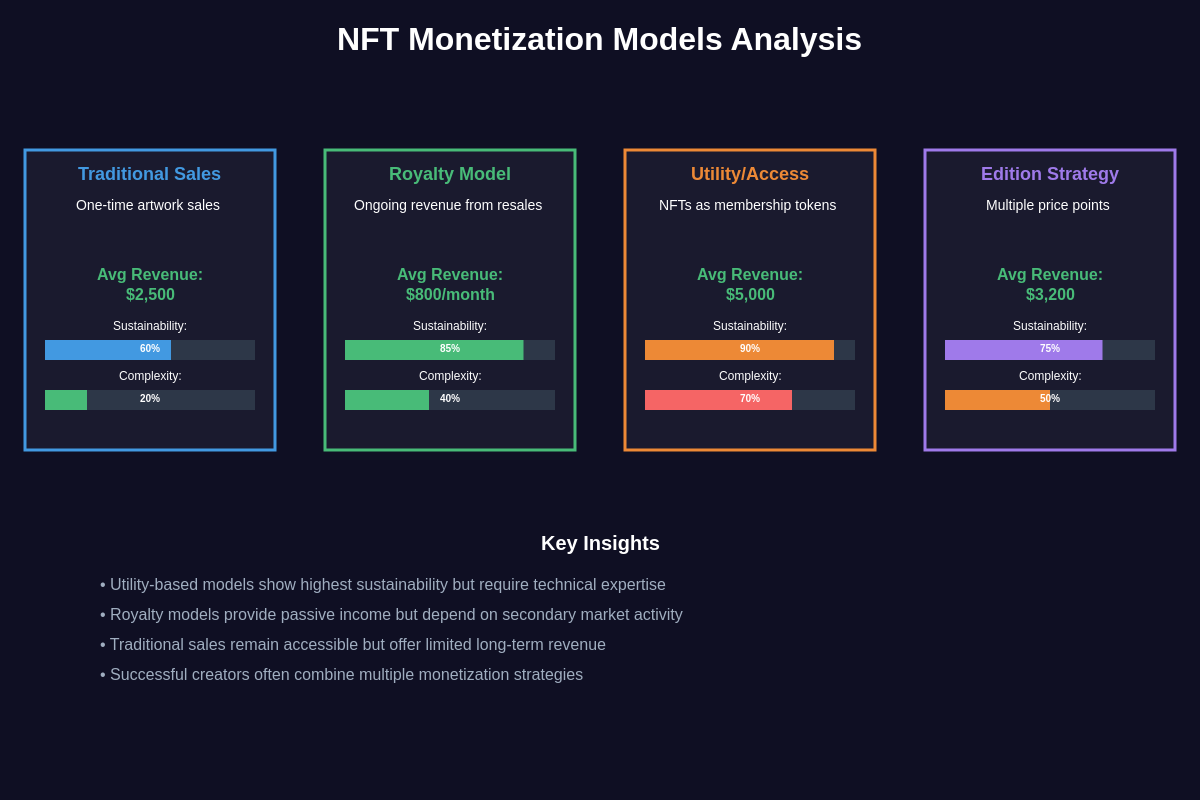Check out TradingView’s comprehensive crypto market analysis tools
The Revolutionary Economics of Digital Ownership
The emergence of non-fungible tokens has fundamentally transformed how digital artists approach monetization, creating entirely new economic models that challenge traditional concepts of art ownership, value creation, and creator compensation. The NFT creator economy represents a paradigm shift from centralized gatekeepers to decentralized marketplaces where artists can directly monetize their digital creations through blockchain-verified ownership and programmable royalty systems.

This revolutionary transformation has enabled creators to capture value not only from initial sales but also from secondary market transactions through embedded royalty mechanisms, creating sustainable income streams that were previously impossible in traditional digital art markets. The ability for artists to maintain ongoing financial relationships with their work through smart contract automation has redefined the relationship between creators and collectors while establishing new frameworks for digital intellectual property monetization.
The scale of this transformation is evidenced by the explosive growth in NFT trading volumes, which reached over $25 billion in 2021 and have continued to evolve despite market volatility, demonstrating the fundamental appeal of creator-controlled digital ownership models. Major artists, musicians, writers, and digital creators have embraced NFT technology not merely as a speculative investment vehicle but as a legitimate tool for building sustainable creative businesses in the digital economy.
Historical Context and Market Evolution
The NFT creator economy emerged from the convergence of several technological and cultural trends including the maturation of blockchain technology, growing acceptance of digital art as a legitimate medium, and increasing creator dissatisfaction with traditional platform monetization models that extract significant value from artist work. Early NFT platforms like SuperRare, Foundation, and OpenSea established the foundational infrastructure for creator-to-collector transactions while pioneering the user experience patterns that would define the broader NFT ecosystem.
The evolution of creator monetization strategies has progressed from simple one-time sales models to sophisticated multi-revenue stream approaches that include primary sales, secondary market royalties, utility-based access tokens, and community membership models. Successful creators have learned to leverage the programmable nature of NFTs to create ongoing value propositions for collectors while building sustainable income streams that extend far beyond traditional art sales.
Market dynamics have shifted dramatically from the initial speculative frenzy of 2021 to more mature creator-focused ecosystems that prioritize sustainable value creation, community building, and long-term collector relationships. This evolution has been driven by both market forces and creator innovation, with successful artists developing sophisticated strategies for audience development, community engagement, and multi-platform presence.
The emergence of creator-focused tools and platforms has lowered barriers to entry while providing sophisticated analytics, marketing tools, and community management capabilities that enable artists to operate as independent businesses rather than dependent creators relying solely on platform algorithms or gallery representation. These developments have democratized access to global art markets while enabling creators to maintain greater control over their creative output and financial destinies.
Revenue Models and Monetization Strategies
Primary sales represent the foundation of NFT creator monetization, with artists setting initial prices based on factors including their established reputation, artwork complexity, collection size, and market positioning relative to comparable creators. Successful pricing strategies often involve careful market research, community feedback, and strategic positioning that balances accessibility with perceived value to ensure both collector interest and sustainable creator income.
Secondary market royalties constitute perhaps the most revolutionary aspect of NFT creator monetization, enabling artists to earn predetermined percentages of all future sales of their work through smart contract automation that executes without requiring ongoing creator involvement. Typical royalty rates range from 2.5% to 10% of sale prices, providing creators with passive income streams that can continue generating revenue for years or decades after initial creation.
Explore detailed NFT market analytics and pricing trends
Utility-based monetization models extend beyond simple ownership verification to include access tokens, membership privileges, exclusive content, real-world benefits, and ongoing creator engagement opportunities that provide collectors with tangible value propositions beyond speculative investment potential. These models create stronger creator-collector relationships while providing creators with multiple revenue streams and reduced dependence on secondary market performance.
Edition strategies allow creators to balance scarcity with accessibility through careful planning of one-of-one pieces, limited editions, and open editions that serve different collector segments while maximizing total revenue potential. Sophisticated creators often develop portfolio approaches that include high-value unique pieces for established collectors alongside more accessible editions that enable broader community participation and creator discovery.
Collaborative revenue models have emerged as creators partner with other artists, brands, musicians, and even collectors to create shared value propositions that expand audience reach while distributing financial risks and rewards. These collaborations often result in cross-pollination of collector bases, shared marketing efforts, and innovative creative outputs that neither party could achieve independently.
Platform Economics and Creator Tools
The NFT platform landscape has evolved from simple marketplace functionality to comprehensive creator economy ecosystems that provide analytics, marketing tools, community management capabilities, and financial management resources that enable artists to operate sophisticated creative businesses. Leading platforms differentiate themselves through creator support services, collector experience quality, and community building tools rather than solely competing on transaction fees.

Fee structures vary significantly across platforms, with creators paying combination of listing fees, transaction fees, and revenue sharing arrangements that can range from 2.5% to 15% of sale proceeds depending on platform positioning and service offerings. Understanding platform economics is crucial for creators developing sustainable monetization strategies, as fee differences can significantly impact net revenue across different sales volumes and price points.
Creator verification and curation processes have become increasingly important as platforms seek to balance accessibility with quality control, implementing various systems including application processes, community voting, and algorithmic filtering to manage creator onboarding while maintaining platform reputation and collector confidence. These systems significantly impact creator discovery and sales potential, making platform selection a strategic decision rather than merely tactical choice.
Analytics and performance tracking tools provided by modern NFT platforms enable creators to understand collector behavior, optimize pricing strategies, identify successful content types, and develop data-driven approaches to community building and marketing. Sophisticated creators leverage these insights to refine their artistic output, adjust monetization strategies, and build more effective collector relationships.
Cross-platform strategies have become essential for successful creators as different platforms serve different collector demographics, price points, and artistic styles, requiring creators to develop platform-specific content strategies while maintaining consistent brand identity and collector relationships across multiple marketplaces. This multi-platform approach maximizes exposure while reducing dependence on any single platform’s performance or policy changes.
Community Building and Collector Relationships
The most successful NFT creators recognize that sustainable monetization depends not merely on creating attractive artwork but on building engaged communities of collectors who become advocates, repeat customers, and collaborative partners in the creative process. Community building requires consistent engagement, transparent communication, and value creation that extends beyond the artwork itself to include educational content, behind-the-scenes access, and collaborative opportunities.
Social media presence across platforms including Twitter, Discord, Instagram, and emerging Web3 social platforms enables creators to share their creative process, engage with collectors, participate in broader conversations about digital art and blockchain technology, and build personal brands that transcend individual artwork sales. Successful creators treat social media not as promotional channels but as relationship building tools that enable authentic connections with their audience.
Collector education has become a crucial component of successful creator strategies as many potential buyers remain unfamiliar with NFT technology, blockchain mechanics, and digital ownership concepts, requiring creators to invest time in educational content that builds confidence and understanding among their audience. This educational approach often results in stronger collector relationships and more informed purchasing decisions that benefit both creators and collectors.
Exclusive access and membership models create additional value propositions for collectors while providing creators with direct communication channels and community management tools that enable deeper relationships and more sophisticated monetization strategies. These models often include private Discord servers, exclusive drops, early access to new work, and collaborative creative opportunities that strengthen creator-collector bonds.
Technology Infrastructure and Smart Contracts
Smart contract functionality represents the technical foundation that enables NFT creator monetization through automated royalty distribution, programmable utility features, and trustless transaction execution that eliminates intermediaries while ensuring creator compensation. Understanding smart contract capabilities and limitations is essential for creators developing sophisticated monetization strategies that leverage blockchain technology effectively.
Royalty implementation varies across different blockchain networks and NFT standards, with creators needing to understand technical specifications, platform compatibility, and enforcement mechanisms to ensure their royalty strategies function as intended across different marketplaces and trading environments. Recent developments in royalty enforcement have highlighted the importance of platform cooperation and technical standards in maintaining creator revenue streams.
Track blockchain network performance and NFT trading data
Gas fees and transaction costs significantly impact creator economics, particularly for artists working with smaller price points or higher transaction volumes, requiring careful consideration of blockchain selection, timing strategies, and fee optimization techniques that maximize net revenue while maintaining accessibility for collectors. Layer 2 solutions and alternative blockchains have emerged as important tools for managing transaction costs.
Metadata management and storage solutions affect both creator costs and long-term artwork accessibility, with different approaches including on-chain storage, IPFS distributed storage, and traditional centralized storage offering various trade-offs between cost, permanence, and decentralization that creators must evaluate based on their specific needs and collector expectations.
Interoperability considerations become important as creators develop cross-platform strategies and collectors expect their NFTs to function across different applications, wallets, and platforms, requiring creators to understand technical standards and compatibility requirements that affect their work’s utility and long-term value proposition.
Legal Framework and Intellectual Property
The legal landscape governing NFT creator rights remains complex and evolving, with traditional intellectual property law intersecting with blockchain technology in ways that create both opportunities and uncertainties for creators seeking to protect their work while monetizing digital ownership. Understanding copyright, trademark, and contract law implications is essential for creators developing sustainable business strategies.
Licensing models for NFT creators have evolved beyond simple ownership transfer to include various approaches including commercial use rights, derivative work permissions, and community governance models that balance creator control with collector utility and value creation. These licensing approaches significantly impact both initial sales potential and long-term royalty streams.
International jurisdictional issues affect creator rights and enforcement mechanisms as NFT marketplaces operate globally while legal frameworks remain primarily national, creating challenges for creators seeking to protect their intellectual property across different jurisdictions and legal systems. Understanding these limitations is important for creators developing global marketing strategies.
Contract terms embedded in smart contracts and platform agreements define creator rights, royalty entitlements, and dispute resolution mechanisms, requiring creators to understand both technical and legal implications of their platform choices and smart contract implementations. Many creators work with legal professionals to ensure their interests are properly protected.
Economic Impact and Market Analysis
The NFT creator economy has generated billions of dollars in transaction volume while creating new forms of digital employment and artistic entrepreneurship that enable creators to build sustainable businesses around their creative output. Market analysis reveals significant income disparities between top-performing creators and the broader creator base, highlighting the importance of strategy, community building, and market positioning.
Income distribution within the NFT creator economy follows patterns similar to other creative industries, with a small percentage of creators generating the majority of revenue while many creators earn modest amounts, emphasizing the importance of understanding market dynamics and developing realistic expectations about monetization potential. Successful creators often combine NFT sales with other revenue streams including traditional art sales, commissioned work, and educational content.
Market volatility affects creator income stability as NFT sales correlate with broader cryptocurrency market cycles, requiring creators to develop financial management strategies that account for irregular income patterns and market fluctuations while building sustainable long-term businesses. Many successful creators reinvest proceeds into their creative practice and community building efforts.
Platform concentration risks emerge as major marketplaces dominate transaction volume, creating dependencies that could affect creator income if platform policies change or market leadership shifts, highlighting the importance of diversification strategies and platform-independent community building efforts that reduce creator vulnerability to platform-specific risks.
Emerging Trends and Future Developments
Artificial intelligence integration is transforming NFT creation processes while raising questions about authorship, value attribution, and creator compensation in AI-assisted creative processes that blur traditional boundaries between human creativity and algorithmic generation. Creators are experimenting with AI tools while developing strategies for maintaining their unique value propositions in an increasingly automated creative landscape.
Utility evolution continues as creators develop more sophisticated use cases for NFTs beyond simple ownership verification, including access tokens, governance rights, real-world benefits, and interactive experiences that provide ongoing value to collectors while creating sustainable creator revenue streams. These developments require creators to think beyond traditional art sales models.
Cross-platform integration is improving as technical standards mature and platforms develop better interoperability, enabling creators to reach broader audiences while providing collectors with more flexible ownership experiences that increase NFT utility and long-term value retention. This trend benefits creators through expanded market access and collector satisfaction.
Monitor emerging cryptocurrency trends and market developments
Regulatory developments will likely affect creator monetization strategies as governments develop frameworks for digital asset taxation, intellectual property protection, and platform regulation that could impact creator income, platform operations, and collector behavior. Staying informed about regulatory trends is important for long-term business planning.
Environmental considerations continue to influence platform selection and collector preferences as proof-of-stake blockchains and carbon-neutral initiatives address sustainability concerns that affect creator reputation and market positioning. Many creators actively communicate their environmental commitments to address collector concerns.
Challenges and Risk Management
Market volatility presents ongoing challenges for creators relying on NFT sales as primary income sources, requiring financial planning strategies that account for irregular income patterns, cryptocurrency price fluctuations, and changing collector preferences that can significantly impact revenue predictability. Successful creators often maintain diversified income streams and financial reserves.
Platform dependence risks affect creators who concentrate their sales activities on single marketplaces, creating vulnerabilities to policy changes, technical issues, and competitive pressures that could impact their ability to reach collectors and generate sales. Building platform-independent audiences and maintaining presence across multiple marketplaces can mitigate these risks.
Technical complexity barriers prevent many creators from fully leveraging NFT technology capabilities, requiring ongoing education about blockchain mechanics, smart contract functionality, and platform features that could enhance their monetization strategies. Many creators benefit from technical advisors or collaborative relationships with more technically sophisticated partners.
Intellectual property theft and unauthorized minting present ongoing challenges as creators must monitor for unauthorized use of their work while developing strategies for protecting their intellectual property in decentralized systems where enforcement can be difficult and expensive. Preventive measures and community reporting systems help address these issues.
Market saturation concerns grow as increasing numbers of creators enter the NFT space while collector attention and spending remain finite, creating competitive pressures that require creators to develop distinctive value propositions and sophisticated marketing strategies to maintain visibility and sales performance in crowded marketplaces.
Success Stories and Case Studies
High-profile creator success stories demonstrate the potential for significant income generation through strategic NFT monetization, with artists like Beeple, Pak, and XCOPY generating millions in sales while building substantial collector communities and establishing new benchmarks for digital art valuation. These success stories provide valuable insights into effective strategies while highlighting the exceptional nature of top-tier performance.

Mid-tier creator strategies reveal more accessible approaches to sustainable NFT monetization that focus on community building, consistent output, and gradual audience development rather than pursuing viral success or speculative pricing strategies. These approaches often result in more stable income streams and stronger collector relationships.
Collaborative success models demonstrate how creators can leverage partnerships, cross-promotion, and shared resources to expand their reach and increase their monetization potential while reducing individual risks and development costs. These collaborations often result in innovative creative outputs and expanded collector bases.
Platform-specific success patterns reveal how different marketplaces reward different types of content, pricing strategies, and community engagement approaches, providing creators with insights for optimizing their platform selection and content strategies based on their specific artistic style and target audience characteristics.
Failure analysis of unsuccessful monetization attempts reveals common pitfalls including inadequate community building, unrealistic pricing strategies, insufficient marketing efforts, and poor understanding of collector preferences that can help other creators avoid similar mistakes while developing more effective approaches to NFT monetization.
Future Outlook and Strategic Recommendations
Long-term sustainability of the NFT creator economy depends on continued innovation in utility, community building, and value creation that extends beyond speculative trading to provide genuine collector value and creator income stability. Creators who focus on building lasting relationships and providing ongoing value are most likely to succeed in mature markets.

Technology adoption trends suggest that NFT functionality will expand beyond simple ownership verification to include more sophisticated applications including real-world integration, cross-platform utility, and enhanced creator-collector interaction capabilities that will create new monetization opportunities for innovative creators who understand and leverage these developments.
Market maturation is likely to result in more specialized niches, professional standards, and institutional participation that could benefit creators who develop strong reputations and sustainable business practices while potentially creating higher barriers to entry for newcomers without established track records or professional capabilities.
Creator education and professional development will become increasingly important as successful NFT monetization requires understanding of technology, marketing, community management, financial planning, and legal considerations that extend far beyond traditional artistic skills, suggesting value in educational resources and professional development programs.
Strategic recommendations for creators entering or expanding their NFT monetization include developing clear value propositions, building authentic communities, maintaining consistent output and engagement, understanding platform dynamics, preparing for market volatility, and treating NFT creation as a business rather than merely an artistic endeavor that requires strategic planning and professional execution.
Disclaimer: This article is for informational purposes only and does not constitute financial, investment, or legal advice. NFT markets are highly volatile and speculative. Creators should conduct thorough research and consider consulting with financial and legal professionals before making significant investments in NFT creation or marketing strategies. Past performance of NFT sales does not guarantee future results, and creators should be prepared for the possibility of financial losses as well as gains.